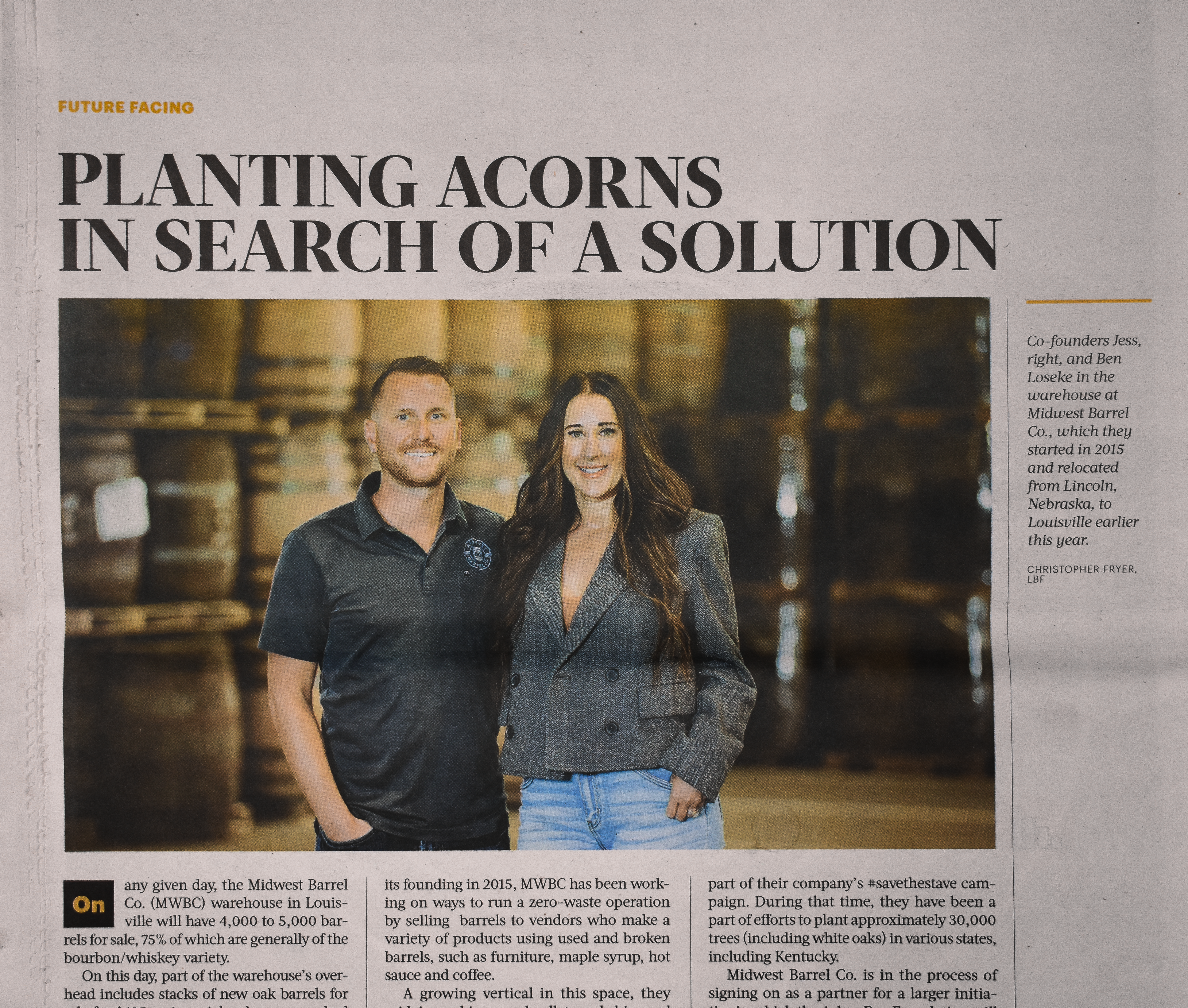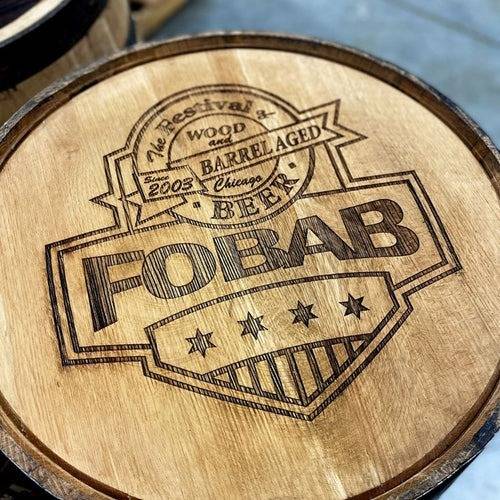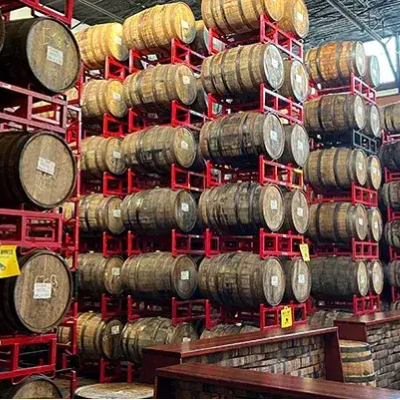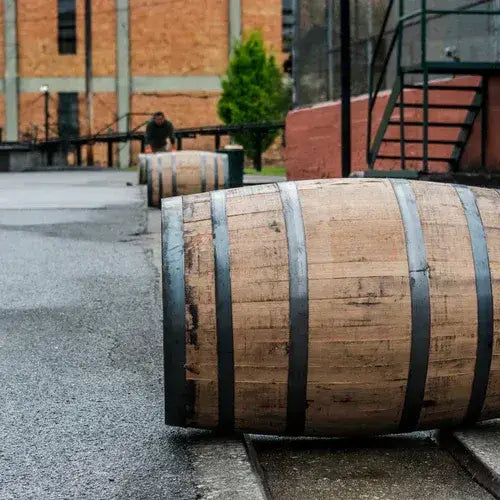The complete guide to whiskey and bourbon barrel char levels
Spetember 13th, 2023

Most barrel wranglers know that to legally call your product “bourbon,” it has to be aged in new, charred oak barrels. The same rule applies to straight whiskey, straight rye and Tennessee whiskey. The char is the blackened interior of the barrel and is a result of the wood having been exposed to heat and flame for a given amount of time.
But one of the ways distilleries distinguish their bourbon and whiskey from the competition is by selecting barrels of different char or even toast levels. While the compounds that interact with the spirit are the same no matter the barrel, it’s the level of char that determines the level of interaction and extraction from the wood.
If you couldn’t already tell, barrels are surprisingly complex – and we are about to dive right into all the details. This is everything you need to know about how char levels separate one barrel from another and how that barrel then interacts with whatever whiskey, bourbon, rum, beer or other beverage it ages.
A Brief Overview of Barrel-Aging
Before we discuss char levels, let’s quickly review what exactly is going on during the barrel-aging process.
In a nutshell, whenever a liquid is barrel-aged, the compounds in the oak interact with the content. If the barrel has been used before, as is common when brewers barrel age their beers, then flavors from the previous contents, such as whiskey, wine or rum, to name a few examples, will also extract from the wood and influence the current contents’ flavor and aroma.
While the barrel brings all of that flavor and aroma to the table, what makes it all work is time. Because wood is porous, oxygen is introduced slowly from the outside of the barrel and the wood itself absorbs the contents. This is when the many different compounds found in the wood interact with the spirit, beer or other liquid in the barrel.
Barrel-aging is also influenced by temperature. When the weather heats up, the wood absorbs more liquid. As the temperature drops, the wood releases more alcohol. The changing seasons and storage conditions become a filtration cycle.
Charred barrels increase filtration

Filtration is also one of the main reasons why barrels are charred in the first place. As the liquid absorbs into the wood, the char filters out certain compounds found in the liquid.
In the case of a whiskey distillate, these can be congeners that are responsible for harsh, less desirable flavors. Congeners are produced during the fermentation and are the main contributors of a whiskey’s flavor. However, there are some congeners that distillers don’t want to end up in their product because the flavors can be off-putting. The barrel char helps remove congeners left over from the distillation process.
Char helps introduce beneficial compounds from the wood
In addition to filtration, having the wood charred before the barrel is filled allows for more access between the contents and beneficial compounds in the wood. Each of these compounds plays a role in the barrel-aging process.
Cellulose
What it does: Cellulose doesn’t have much, if any, impact on flavor. However, it acts as a bond and moves along extracted compounds.
Hemicellulose
What it does: Hemicellulose carries several different types of sugars that contribute sweet, toasty flavors, such as toasted bread, caramel, coffee and maple syrup. These sugars can also claim credit for helping “smooth” out how the aged liquid feels on your pallet. Hemicellulose also provides some color.
Lignin
What it does: The charring process causes lignin in the oak to release vanillin, which adds notes of vanilla, cream soda, graham cracker and similar flavors. Deeper char levels can cause the vanillin to pick up spicy and smoky flavors, too, which carry over during the barrel-aging process.
Tannins
What they do: Though not as prevalent in the oak compared to the other compounds, tannins have “off” notes, but are broken down during charring and toasting. They’re still important, though, in that they promote oxidation and structure, which can help with aged products and their mouthfeel.
For a deeper look into these compounds, World Cooperage has an excellent breakdown.
Different char levels, different results

Now, as you might expect, how all those compounds from the oak interact with the barrel’s contents depend on many factors, including the char level. Barrels can also be toasted rather than charred.
When it comes to char level, or char depth, most cooperages have a range from #1 to #4, with #1 being the lightest and #4 being the traditional heaviest, and among the most popular for bourbon and whiskey barrels. The higher the level, the longer the barrel is exposed to flame and heat.
Standard bourbon/whiskey barrel char levels
- #1 Char (Light/Medium) - 15 seconds
- #2 Char (Medium) - 30 seconds
- #3 Char (Heavy) - 35 seconds
- #4 Char (Heavy, alligator’s char) - 55 seconds
These scales can change depending on your source. Many include toast levels on their scales. Toasting a barrel is similar to charring, except there is less heat and flame for a lower amount of time. Barrels can also be toasted in special ovens.
When you add toast levels to the scale, the range then goes from #1 Heavy Toast all the way to #7 No. 5 Craft Distiller’s Char.
Wine barrels are often toasted. The degree to which they are toasted varies just like whiskey and bourbon barrels. It all depends on what flavors the winemaker is looking to pull from the oak. Toasted barrels can add notes of everything from bread and vanilla to coffee and dark chocolate.
Why some distilleries are using lower char levels

Many distilleries are opting to finish their whiskies and bourbons in toasted or lightly charred barrels to pull a variety of flavors from the wood.
Independent Stave Company, one of the world’s largest cooperages, has a blog post that shows the light char actually exposes distillate to more of certain compounds. This means a distiller can access those flavors in less time by finishing in a secondary barrel with a lower char depth.
How char levels affect barrel-aged beer
As with any type of beverage aged in a barrel, the char level will affect beer, too.
Again, everything boils down to what types of flavors you are aiming to extract from the barrel. Understanding the effects of different char levels, though, can help you determine what flavors you might pick up with any given barrel.
If the barrel is once-used and freshly emptied, as most of the barrels we carry are, then you can likely count on not only taking on flavor from the previous contents, but also flavor notes from the oak itself.
Finally, as you may assume, the char level does affect the beer, too. We have received feedback that heavier char levels can help cut the amount of sweetness in a beer, while lighter charred barrels will have less of that effect.
Barrels for every brew

Ready to move on from the research stage for your next barrel-aged release? We have used whiskey and used bourbon barrels available, plus wine and speciality barrels. Take a look at what’s in stock now!
Need something specific? Contact us. We’re here to help. Cheers!

ABOUT THE AUTHOR:






